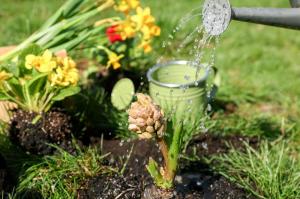How to Fix Dying Tomato Plants
Tomatoes are one of the most popular garden plants but at times they can become sickly and start dying. Tomatoes can fall sick as a result of many factors such as pests, diseases, nutrient deficiency, over or under-watering, and environmental factors. However, the good news is that with proper care and attention, dying tomato plants can be nursed back to health. Here are some tips to help you save your tomato plants.
Identify the Problem
The first step to fixing a dying tomato plant is to identify the problem that is causing the plant to fall sick. Look closely at the plant and examine the leaves, stem, and fruit. If the leaves have spots, holes, or discoloration, the plant may be suffering from a disease or pest infestation. If the leaves are yellow and wilted, the plant could be over or under-watered. If the fruits are underdeveloped, the plant may not be getting enough nutrients or sunlight.
Fix Nutrient Deficiency
Tomatoes require certain nutrients to grow healthily. If your tomato plants are not getting sufficient nutrients, they will start to wilt or die. To fix nutrient deficiency, fertilize the soil with compost or a balanced fertilizer. You can also try using organic fertilizers like fish emulsion or bone meal. Be sure not to over-fertilize because it can burn the plant roots and cause more harm than good.
Water Correctly
Tomatoes require adequate watering but over-watering or under-watering can be detrimental to the plants. Over-watering can cause the roots to rot, while under-watering can cause the plant to wilt and die. Water the plants deeply and regularly but not excessively. The soil should be moist but not waterlogged.
Control Pests and Diseases
Pests and diseases are the most common causes of tomato plant failure. Some of the most common tomato pests include aphids, whiteflies, spider mites, and cutworms, among others. Diseases such as fungal and bacterial infections can also cause harm to the plants. Control pests and diseases by practicing crop rotation, regular inspections, using organic pesticides, and removing infected or infested parts of the plant.
Provide Enough Sunlight
Tomatoes require a minimum of 6 hours of sunlight each day. If the plants are not getting enough sunlight, they will grow weak and eventually die. Make sure the garden bed is in a location that gets sufficient sunlight. If you are growing tomatoes indoors, use grow lights to supplement natural sunlight.
Conclusion
Tomato plant problems can be disheartening but with the right measures, they can be fixed, and the plants nursed back to good health. Knowing how to identify the problem that is causing the plant to die and taking the right steps to address it is key to saving a dying tomato plant. Remember to provide adequate water, sunlight, nutrients, and take measures to control pests, and diseases.

 how many times do yo...
how many times do yo... how many planted tre...
how many planted tre... how many pine trees ...
how many pine trees ... how many pecan trees...
how many pecan trees... how many plants comp...
how many plants comp... how many plants can ...
how many plants can ... how many plants and ...
how many plants and ... how many pepper plan...
how many pepper plan...
































